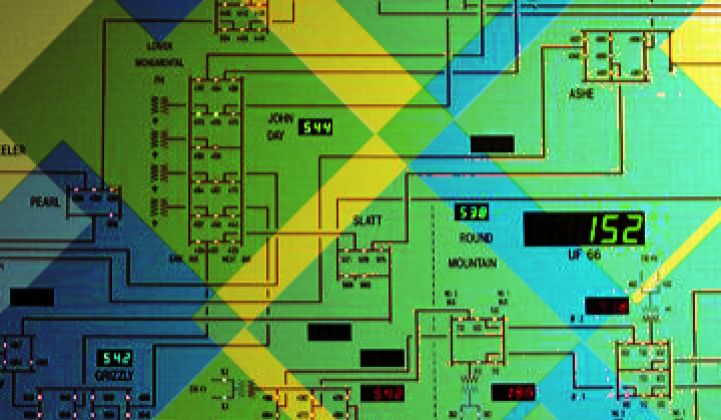Starting in September, SAP will offer a new meter data management platform, SAP Smart Meter Analytics.
The latest application leverages SAP’s in-memory computing to take the mass of data coming in from meters, SCADA and other sources and process it in real time. To build the product, SAP put together a group of utilities, along with its partners to find a way to integrate all smart grid data into SAP systems, according to Henry Bailey, Vice President of Industry Solutions Group at SAP.
“One of the things that differentiates us is that we’re not only looking at serving the [utility customer],” said Scott Bolick, vice president of sustainability at SAP, “but we’re looking at how utilities can collaborate with the consumer."
Using in-memory computing allows for data to be processed in real time to provide a snapshot or to constantly be updating it. The advantage here is speed, said Bolick. Operators can put in a simple query when they see a perceived energy variance and get an instant answer. “It’s about matching consumption with a lot of other variables,” he said. “You’re searching tens of millions of records in sub-second time.”
SAP is not the only company using in-memory technology to meet a utility’s data needs, according to Chet Geschickter, Senior Smart Grid Analyst with GTM Research. Space-Time Insight is a startup that provides situational intelligence solutions for independent system operators and utilities using visual analytics and geospatial software. Space-Time Insights counts IBM, OSIsoft, Accenture, SAP and Oracle as partners.
Although the solution is not unique to SAP, the reach of the global software giant gives it a leg up. Perhaps at this point, you’re thinking: “Isn’t SAP already in the business of meter data management?” Yes, in many ways they are. eMeter and OSIsoft are strategic partners of the SAP Lighthouse Council. But SAP sees their new offerings as interfacing with, and not necessarily competing with meter data management systems, at least for now.
Although the system is being pitched to operators, SAP also sees the platform being used to crunch consumer data to design better demand response programs and understand customer profiles better, even down to the level of appliance use, according to Bailey.
All of this processing isn’t done entirely in the cloud, however. Geschickter questions the server investment that will be required for programs like this. “It’s going to take a lot of iron,” he said. SAP didn’t disagree, but it said it depended on how much data the customer wants to house. For the customer in Germany, moving from annual readings to 15-minute interval data increased the annual data from one to about 400 GM. “In-memory technology is dependent upon what the customer wants to accomplish,” SAP told Greentech Media in an email. “HANA (High-Performance Analytic Appliance) is a computing engine. What sources the customer wishes to draw from will ultimately determine the number of servers the customer will require.”
Although it can’t be done in the cloud yet, SAP is working on taking its HANA technology to the cloud. But even without the cloud, SAP thinks it has a solution that will transform utility operations end to end. “Whether it’s account management or operational,” said Bolick, “they can do it at a speed they couldn’t do it at before.”
Editor's Note: The original article stated that the platform could integrate SCADA technology, which it cannot not, and that it was tested with a German utility. That information, which came from SAP, was later refuted by the company.



